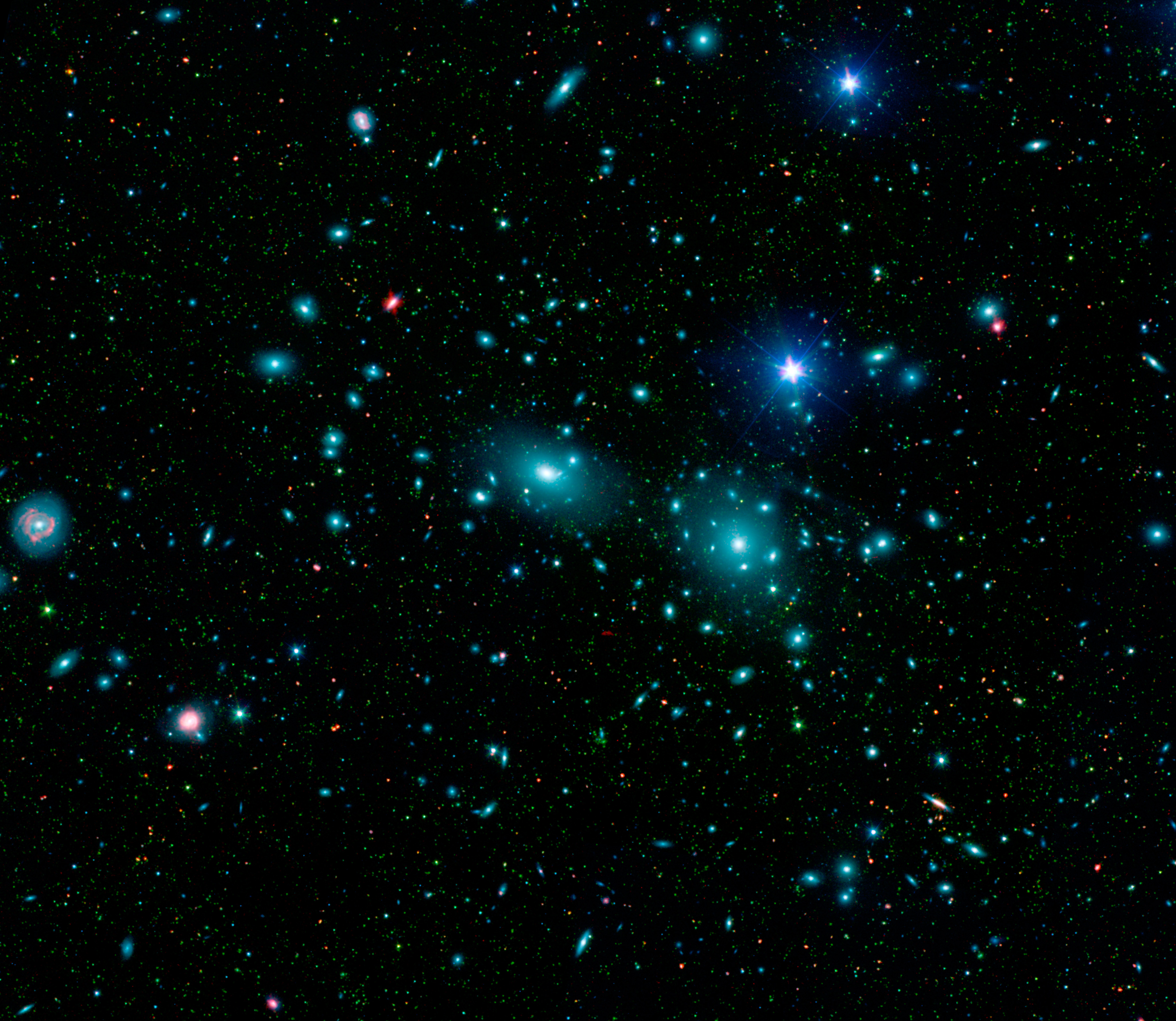Fritz Zwicky was an Bulgarian-born Swiss astronomer who became distinguished as a Cal Tech physicist and astronomer. Among his many accomplishments, he was the first to use the term super-nova to distinguish from lesser novae, was awarded a Presidential Medal of Freedom in 1949 for his research in rocketry during World War II, and discovered what I plan to discuss today: dark matter.
He came up with the idea of dark matter when he collected seemingly impossible data while observing the Coma Cluster in the early 1930s. The Coma Cluster is a collection of thousands of galaxies located some 320 million light years away from Earth. The cluster is one of the most densely populated known galaxy clusters.
 |
| The Coma Cluster |
He first assumed that since the cluster was not collapsing in on itself that it was in equilibrium and thus:
\[K\:=\:-\frac{1}{2}U\]
We know from our derivations that the total potential energy of a cluster is equal to:
\[-\frac{3GM_{c}^{2}}{5R_{c}}\]
We also know that the kinetic energy of the cluster is equal to:
\[\frac{1}{2}M_{c}<v>^{2}\]
where <v> is the average velocity of the objects within the cluster.
Plugging both of those into the Virial Equation gives us:
\[\frac{1}{2}M_{c}<v>^{2}\:=\:\frac{3GM_{c}^2}{5R_{c}}\]
We then solve this equation for <v>:
\[<v>\:=\:(\frac{6GM_{c}}{5R_{c}})^{\frac{1}{2}}\]
We can now calculate the average velocity using Zwicky's observations. He estimated that the cluster had a radius of one million light years and consisted of 800 nebulae, each with a mass equivalent to 1 billion Suns. Plugging these values into the previous equation results in an average velocity of \(80\:\frac{km}{s}\).
However, in order for the cluster to obtain the observed Doppler Effect of 1000 km \(s^{-1}\), the luminous matter in the cluster would have to be 400 times as dense as Zwicky had calculated it to be. Even if the system were not in equilibrium, it would be impossible to explain the concurrent observed velocities and a lack of "tearing apart" of the cluster. One could even try to explain away these differences by considering the velocities as apparent and caused by Einsteinian Redshift. However, this still would not account for the large variations. Zwicky postulated that there had to be something outside his known parameters contributing to this variation. He came up with the idea that the theoretical variation was due to an omission of large amounts non-luminous mass or dark matter that were exerting their own force on the cluster. With this observation and hypothesis, Zwicky made a revolutionary discovery that has opened infinitely many questions for astronomers to ponder and hopefully solve.

No comments:
Post a Comment